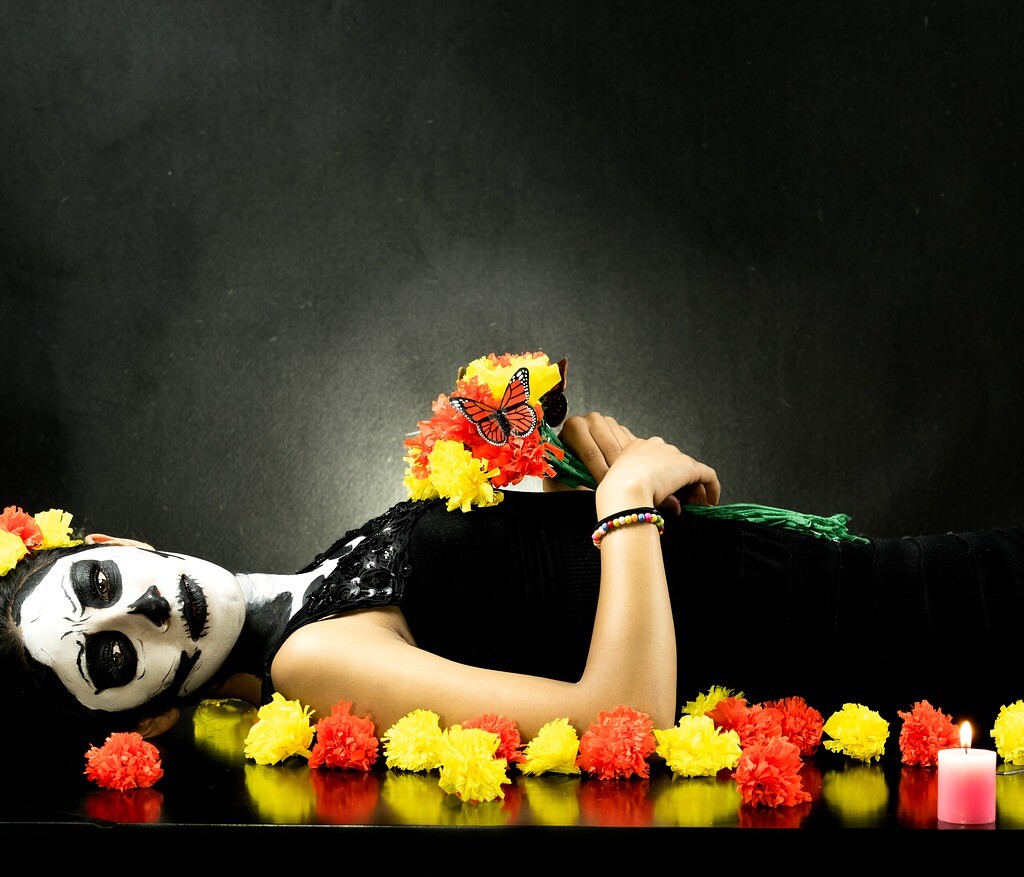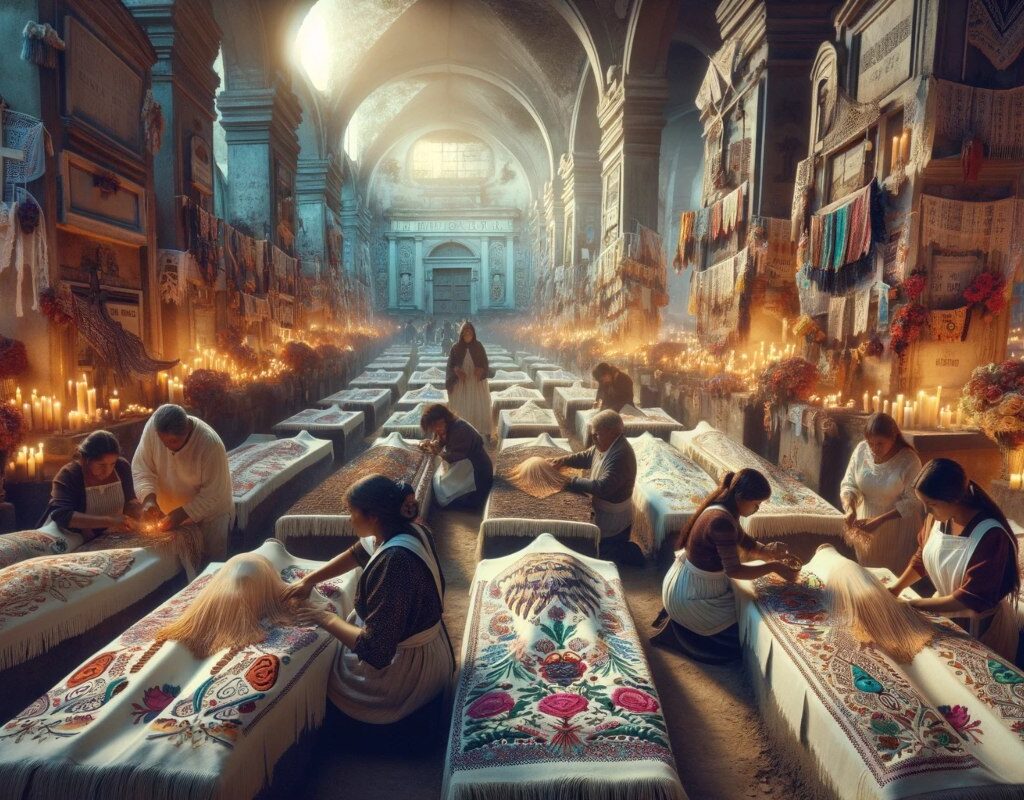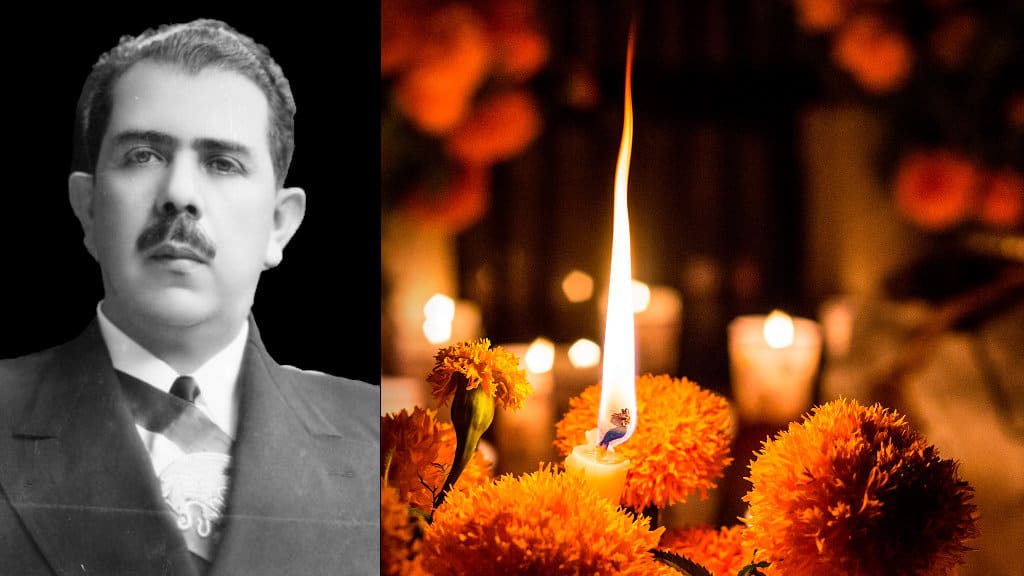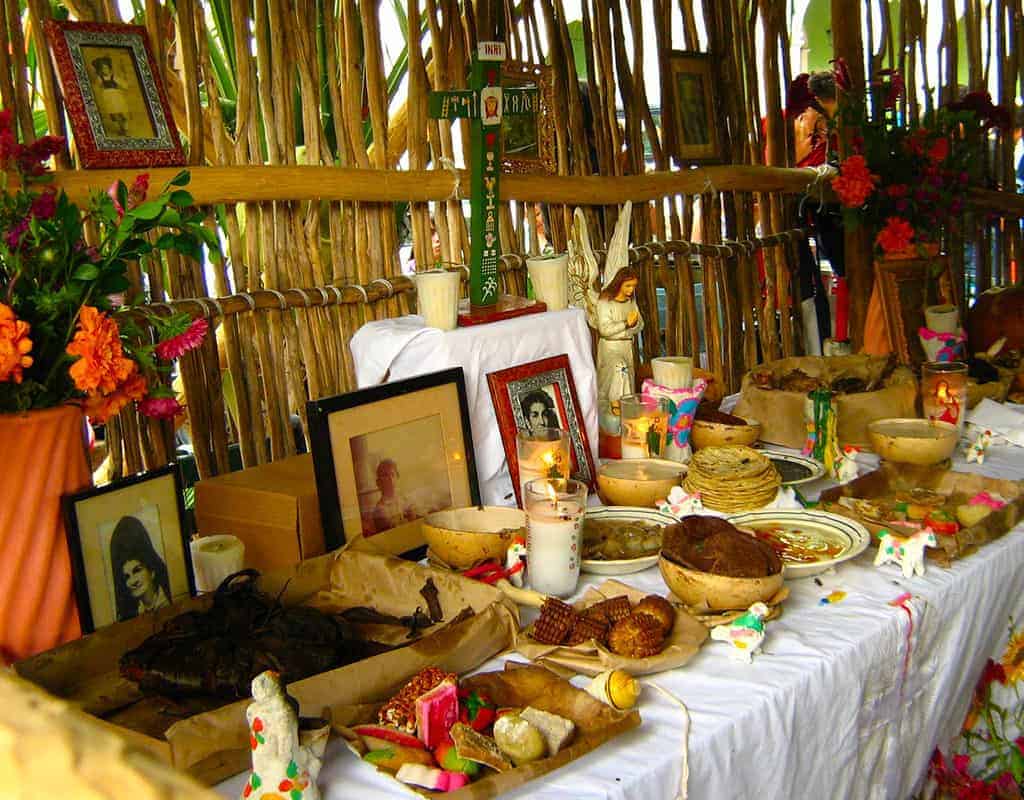In Mexico, the Day of the Dead transcends a mere celebration. Picture a fusion of ancient vibes from pre-Hispanic culture with touches of Catholicism. Here, past and present blend to lovingly, and sometimes humorously, remember those no longer with us.
A Spiritual Journey: Step-by-Step Guide to Creating a Day of the Dead Altar
What makes this celebration so unique? The emotional roller coaster. We feel the sadness of loss, but also celebrate the stories and memories of our beloved departed. And yes, in Mexico, we even find humor in death.
The festivities split across two days: November 1 and 2.
The first, All Saints’ Day, is more about remembering the young souls who have left us. Families create incredible altars, whether at home or in cemeteries. Think of these as Instagram stories in 3D form, bursting with colors, marigold flowers, and even toys.
November 2 marks the major celebration, hoping for a spiritual visit from the departed adults.
The Day of the Dead, November 2
This day is more than just a date on the calendar; it’s a vibrant celebration that revives traditions we might have otherwise left behind.
Sure, some people make only a quick visit to the cemetery, leaving behind flowers and candles. But for many, it’s an experience starting at dawn, dedicating time and passion to building altars in memory of those who are gone.
These altars are not just artistic expressions; they carry deep meaning.
They’re said to aid the soul’s journey, providing peaceful passage after death. Imagine dedicating hours to constructing these masterpieces, each reflecting the love, commitment, and creativity the individual feels.
It’s almost like a DIY project at the intersection of tradition and contemporary art!
Crafting an Altar
Creating an altar can be as simple or elaborate as you desire. The basic version some assemble at home includes a photograph, a special space, flowers, and a few mementos. However, if you lean towards the traditional, there are altars with seven levels, symbolizing the challenges souls face on their journey.
Preparation is key. Envision clearing the space, using aromatic herbs, as if setting the stage for a yoga or meditation session.
If you’re considering diving into this tradition and crafting an altar, here are some tips. There are numerous ways to do it, and it all depends on your feelings and what you wish to convey.
The Art of Building a Day of the Dead Altar Step by Step
In constructing an altar, you’re not only paying tribute to a loved one who has passed away but also creating a unique piece of art. If you choose to embrace the seven-level tradition, here’s a guide on how to do it:
Altar Base
Begin by building from the base upwards. Use cardboard boxes, wood, or whatever materials you have on hand. Each level should be slightly smaller than the one below it. Cover each level with fabrics in black and white tones, colors that reflect the duality of life and death.
Level 1 – Religious Devotion
On the first level, place an image that holds spiritual meaning for you and your family. This might be a patron saint, the Virgin Mary, or any religious figure that connects you to the divine.
Level 2 – Souls in Transit
This step is dedicated to the souls in purgatory, in transition between earthly life and the beyond.
Level 3 – The Child’s Touch
For the souls of children who have departed, add salt. It’s a symbol of purity and hope.
Level 4 – Bread of the Dead
This is one of the most iconic elements. The [bread of the dead](https://www.infomistico.com/portal/dia-muertos-invento-espanol/), adorned with red-colored sugar resembling blood, is a staple. If possible, bake it yourself or have a family member do it, as a personal touch adds deeper meaning.
Level 5 – Flavors and Aromas
Here, incorporate the deceased’s favorite tastes. Place fruits, beloved dishes, or any food that connects you to them through flavor and memory.
Level 6 – Personal Connection
On this level, add a photo of the loved one to whom you’re dedicating the altar. It’s a way to bring their essence and presence into the space.
Level 7 – Spiritual Culmination
To conclude, place a cross made of tejocotes and limes, merging the end and the beginning, life and death, in an eternal circle of remembrance and love. Remember, beyond the objects and levels, the heart of the altar lies in the love and memories you share with the loved one you’re honoring.
Essential Elements for Your Day of the Dead Altar
Each item you place on your altar holds significance and contributes to this mosaic of memories and spirituality. Here’s what you can include and why:
- Paper chains: Use purple and yellow paper to create chains. These colors symbolize the connection between life (yellow) and death (purple).
- Cut-out paper: This papercraft adds a touch of color and motion, symbolizing the ease with which souls can travel between the world of the living and the dead.
- Flowers: Different colors carry various meanings – white for the sky, yellow for the earth, and purple for mourning. Flowers not only decorate but also guide souls towards the altar.
- Candles: Each flame represents a soul and helps guide it with its light and warmth.
- White canvas: You can lay a white canvas to symbolize purity and heaven.
- Copal incense: The smoke from copal acts as a bridge between life and death, filling the space with a sacred aroma.
- Corn: Represents the harvest and is a staple in the Mexican diet and culture.
- Fruits: Jicamas, oranges, tejocotes, and sugarcane are examples of natural offerings you can include.
- Sugar skulls: An indigenous tradition that brings a sweet and artistic touch to the altar.
- Water: Essential for life, water also serves to refresh souls during their visit.
- Favorite dishes: Include the deceased’s favorite food to make them feel more at home.
- Photograph of the honoree: Display an image of the person to whom you’re dedicating the altar.
- Christian elements: Like a figure of Christ or a cross, which provides blessings and protection.
- Lime cross: Used to represent the four cardinal points and guide the souls.
- Salt: Used for purification and to prevent spiritual corruption.
- Pathway of petals: Create a pathway with cempasúchil petals and flowers from the entrance to the altar, guiding the souls.
- Stick: Some include a stick to protect against spirits and demons.
- Personal objects: Items that belonged to the deceased can make the altar more personal and meaningful.
Each of these elements brings its own voice and feeling to the altar, transforming it into a place not just of remembrance, but also of celebration and personal reflection.
The beauty of Day of the Dead altars lies in their ability to connect the past with the present, life with death, and pain with joy. Every element tells a story, and together, they remind us that even though our loved ones are no longer with us, their essence and memories live on forever.
Don’t miss out!




